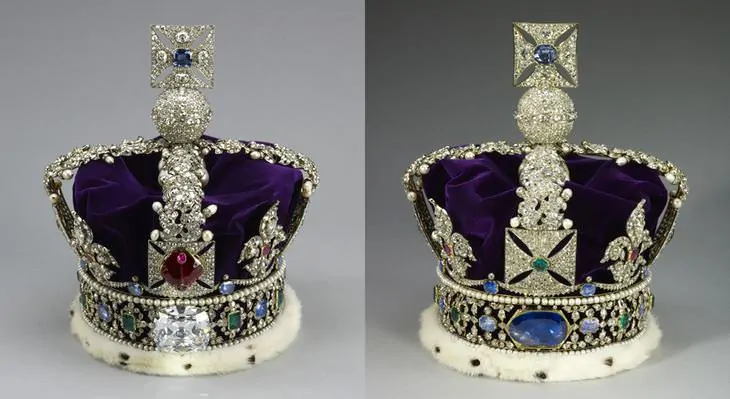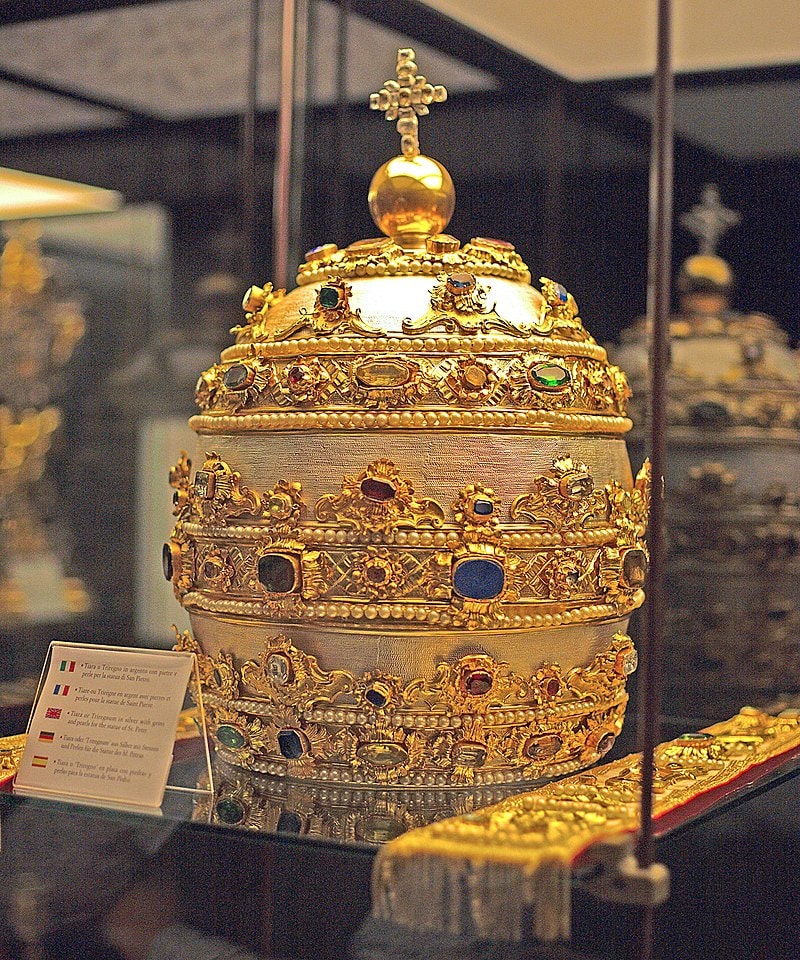
Table of Contents
Say crowns and tiaras and chances are you’re thinking of kings and queens. For centuries, these head ornaments were worn by royalty to represent their authority and status. From ancient Egyptian times to the modern day, crowns and tiaras have been an indispensable part of royal attire.
We often use the words tiara and crown interchangeably but there are very clear distinctions between the two. Let’s take a look at what makes a crown a crown and a tiara a tiara – and the important question, which really fits a queen?
Tiara vs. Crown – 8 Main Differences
Let’s begin by having a quick look at 8 main differences between these two types of head ornaments:
- The word crown is an umbrella term, encompassing a number of headgear varieties.
- A crown is circular whereas a tiara is semi-circular and only covers half the head.
- A tiara is a type of crown, but a crown is not a type of tiara.
- A tiara is typically worn by women whereas crowns can be worn by both men and women.
- Crowns are often more colorful and elaborate than tiaras.
- A crown is a representation of power, authority and royal status.
- Tiaras are frequently worn by brides and beauty pageant winners.
- Crowns and tiaras differ in design around the globe, but crowns tend to be taken more seriously.
What’s a Crown?

A crown can be worn by both kings and queens – it’s a unisex head adornment. It has a complete circular base, and when worn, encircles the entire head. Crowns often look the same from all angles and are as elaborate from the back as from the front.
Crowns are often larger than tiaras and stand taller on the head. They typically contain priceless precious gemstones which are set in a precious metal, commonly gold.
There is no one particular design for crowns accepted the world over. Apart from the traits mentioned above, crowns differ according to country and time period. Crowns are often upgraded or altered to suit its context – the fashion of the times and the wearer.

One of the most famous crowns in the world is the Imperial State Crown of the United Kingdom which symbolizes the sovereignty of the ruler. It was worn by Queen Elizabeth II and when not in use, was in either Jewel House or the Tower of London on display.
This regal headpiece contains some of the world’s most famous jewels, including the highly controversial 105 carat Kohi-noor diamond taken from India. It holds approximately 2800 diamonds, 273 pearls and about 33 sapphires, rubies and emeralds.
While most kings and emperors have worn and continue to wear crowns, a notable exception is the Japanese emperor. Coming from what’s often considered the world’s oldest hereditary monarchy, with a lineage that dates back over 2,600 years, Japanese emperors don’t wear crowns but instead wears traditional court attire.
What’s a Tiara?

A tiara is a type of crown but has several distinct features. One of the main points to note is that tiaras are only worn by females. Unlike a crown, a tiara is semi-circular and is perched on top of the head (generally into the hair), with the focus on the front.
Tiara’s come in all sizes, with some delicate and petite while others sit high on their wearer’s heads. While most tiaras are typically made using gemstones such as diamonds and pearls and have a feminine air, others showcase splendid colorful jewels such as aquamarines, emeralds and rubies.

These days, while crowns are still often reserved for royalty or eccentric celebrities, tiaras are more common amongst the commoners. They are sometimes worn by brides on their wedding days, beauty pageant winners and by little girls for various events.

On a side note, don’t confuse the papal tiara with tiaras in general. This triple layered special headdress was only worn by Popes, from the 8th century up until the mid-20th century. It doesn’t have anything to do with the general public or royalty, and it’s definitely not worn by women!
Which Is Fit for a Queen?
The answer to this question is – both! Ok, you probably already knew that was coming. But the ways in which a queen would wear either a crown or a tiara will denote different things.
For formal state functions, coronations, or ceremonies, a crown is typically worn to signify her status as a reigning monarch. For less formal occasions, a queen might choose to wear a tiara, which is generally smaller, lighter, and less ostentatious than a crown but still signifies high social status and nobility.
In April 2023, King Charles wife Camilla became Queen Camilla. As the new queen of England, Camilla chose to wear Queen Mary’s crown at the coronation.
Wrapping Up
In essence, both crowns and tiaras serve as symbols of status, power, and elegance, but their usage and symbolism vary. Crowns denote absolute power and monarchy, commonly used in royal and state ceremonies. Tiaras, on the other hand, embody femininity and grace, reserved for special occasions to symbolize nobility or high social status.
If you would like to know more about bridal tiaras, read our guide to tiaras for weddings. If you’re looking for a tiara for a wedding or function, check out Amazon’s extensive range of tiaras. We also recommend checking on Etsy’s impressive range of tiaras and crowns, ranging from a few dollars to thousands of dollars.









